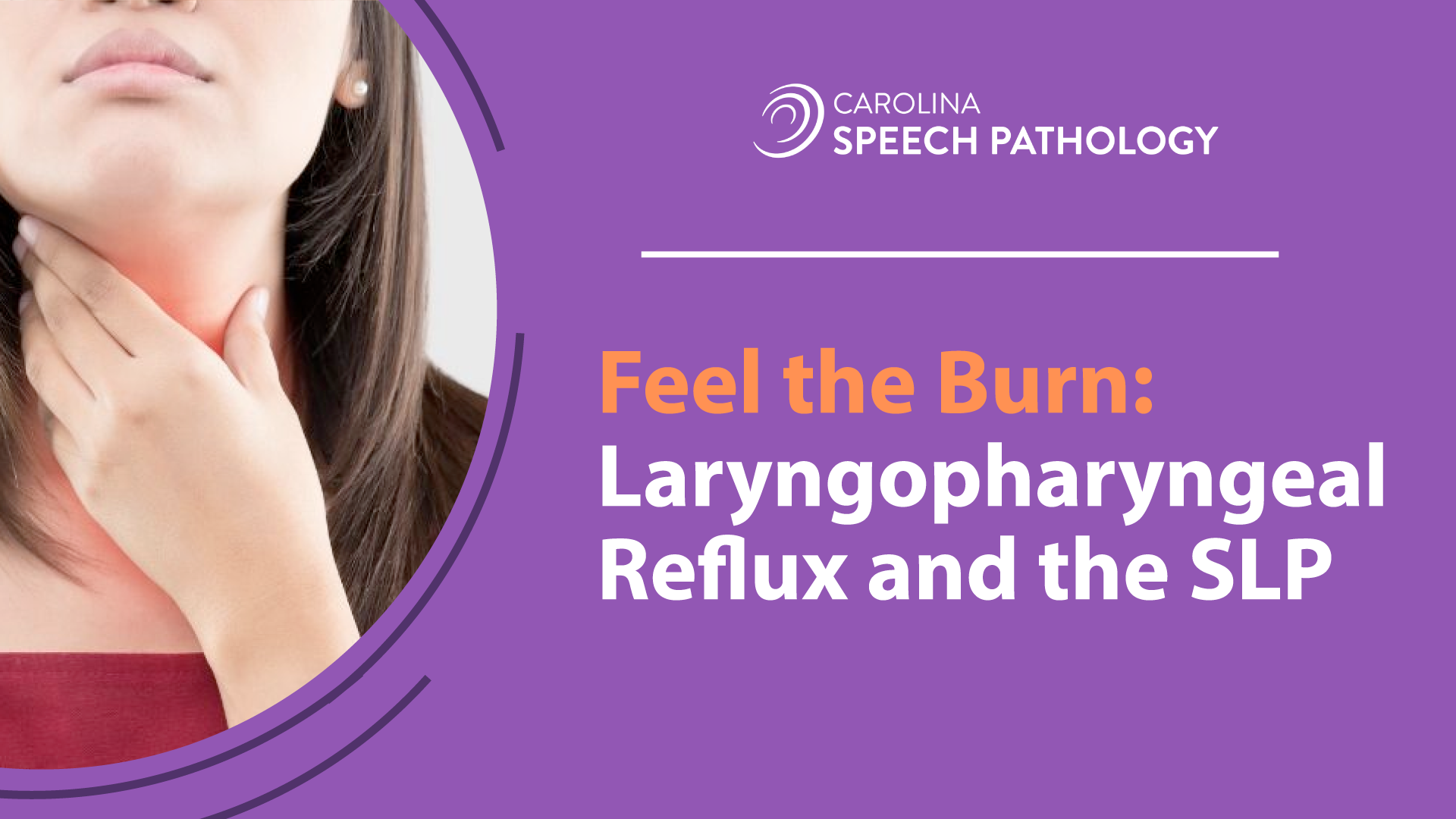Laryngopharyngeal reflux (LPR), also know as extra-esophageal reflux (EER), occurs when the gastric contents flow up through the esophagus and into the larynx, pharynx, nasopharynx or airway. This differs from gastroeosphageal reflux (GER), which is when the gastric contents flow up into the esophagus. There are many symptoms of laryngopharyngeal reflux including coughing, throat clearing, globus sensation, vocal hoarseness, throat discomfort, post-nasal drip, difficulty swallowing, laryngospasm, or pulmonary issues. Some of these symptoms may overlap with symptoms of GER or even oropharyngeal dysphagia, so it can be difficult to tease out exactly what’s going on down there! Recurrent LPR can lead to damage to the delicate mucosa within the larynx, so it is important for SLPs to take note of any complaints or symptoms. Our role is to direct our patients to the right professions when needed for identification of the pathophysiologic source of LPR and to determine the appropriate intervention.
With symptoms of LPR, utilizing the Reflux Symptom Index (RSI)1 can be beneficial in determining if a referral to a Laryngologist is appropriate. SLPs who perform FEES may also utilize the Reflux Finding Score (Belafsky, 2001)2 to identify whether or not there is inflammation within the laryngeal complex. It is important to note that utilizing the RFS alone does not draw a direct line to the diagnosis of LPR, it only documents inflammation. LPR may lead to inflammation, but other sources of inflammation may be at play, such as dehydration, allergies, or medication effects. Often we, as SLPs, are the first to encounter patients with symptoms that may be tied to LPR, so keeping our ears open to complaints of symptoms and our eyes open to the health of the laryngeal tissue when doing endoscopy can direct our patients on a path to find answers from our Laryngology colleagues.
Learn more by joining us for a live webinar from a Laryngologist who specializes in working with patients with GER and LPR! Dr. Ashli O’Rourke will present Laryngopharyngeal Reflux: Essential Information for the SLP on November 3, 2023 from 12:00 to 2:00 pm (Eastern). Read more and register here. Can’t make it? The recording will be available from November 4, 2023 through November 30, 2023 for you to take as a self study.
References:
- Belafsky, P. C., Postma, G. N., & Kaufman, J. A. (2002) Validity and reliability of the reflux symptom index. Journal of Voice, 16 (2), 274-277.
- Belafsky, P. C., Postma, G. N., & Kaufman, J. A. (2001). The validity and reliability of the reflux finding score. Laryngoscope, 111, 1313-1317.
- Eruksel, E., Dogan, M., Olgun., O., Kocak I., Celikel, T. (2009). Incidence and treatment results of laryngopharyngeal reflux in chronic obstructive pulmonary disease. Eur Arch Otorhinolaryngol, 266, 1267-1271.
- Kelchner, L.N., Horne, J., Klaben J., Stemple, J., Adam, S., Kereiakes, T. (2007). Reliability of speech language pathologists and otolaryngologists ratings of laryngeal signs of reflux in and asymptomatic population using the refluxing finding score. Journal of Voice, 21, 92-100.
- Francis, D.,Vaezi, M. (2015). Should the Reflex Be Reflux? Throat Symptoms and Alternative Explanations. Clinical Gastroenterology and Hepatology, 13:1560–1566.
- Milstein, C. et al (2005). Prevalence of Laryngeal Irritation Signs Associated with Reflux in Asymptomatic Volunteers: Impact of Endoscope Technique (Rigid vs. Flexible Laryngoscope). The Laryngoscope, 115: December 2256-2261.
- Yukel, E.S & Vaezi, M.F. (2012). New developments in extraesophageal reflux disease. GastroenterologyAnd Hepatology, 8(9), 590-600.

